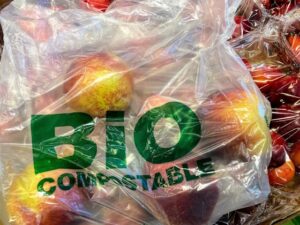Hidden within the issue of food waste is a resource crisis that is quietly eroding our planet’s natural wealth. When we waste food, we also squander all the materials that went into producing it: energy, water, labor, land, chemicals, and more. This misuse not only contributes to environmental degradation but also perpetuates a destructive cycle in which we continue to generate more than we need only to discard a significant portion of it. If we truly want to address this crisis, we must start by reducing the amount we buy and consume, ultimately disrupting a food system that encourages overproduction.
One example of this is the demand for perfect-looking produce. Farmers often overplant crops to ensure they meet retailers’ strict aesthetic standards, such as size, color, and shape. This results in a large portion of perfectly edible food being discarded before it even reaches shelves. Additionally, bulk pricing and promotions, such as “buy one, get one free” deals, incentivize consumers to purchase more than they need, leading to further food waste. This system creates a surplus of food at multiple stages, from farm to table, much of which ultimately goes unused.
Water
In the United States alone, wasted food takes 5.9 trillion gallons of freshwater each year. This depletion of water threatens long-term water security, particularly in regions already facing scarcity. Food production also places strain on blue water, or water that comes from freshwater lakes, rivers, and aquifers. This contributes to environmental issues like salinization, waterlogging, and soil degradation, which further compromise our ability to sustainably grow food in the future.
Energy
The energy footprint of food waste is equally concerning. Each year, 664 billion kilowatt-hours of energy are used to make food that never gets eaten. This amount of energy could power 50 million homes annually, underscoring the vast inefficiencies in our food system. This energy waste drives up costs for consumers and exacerbates our reliance on fossil fuels, contributing to climate change. Every time we throw away food, we are essentially discarding the energy that went into growing, harvesting, processing, and transporting it.
Land
Land use is another critical component of food systems. Approximately 140 million acres of land are devoted annually to producing food that ends up in landfills. This land could be used for reforestation, habitat restoration, or other purposes that support biodiversity. Instead, we are driving a significant loss, with land use for agriculture causing up to a 14 percent drop in global biodiversity. The depletion of species and ecosystems diminishes the planet’s natural beauty and disrupts the ecological balance that supports human life.
Chemicals
The environmental toll extends beyond water and land to the chemicals used in food production. Every year, 778 million pounds of pesticides and 14 billion pounds of fertilizer are applied to food that is ultimately wasted. The runoff from these chemicals contaminates soil and water, leading to issues such as the loss of arable land, the degradation of water quality, and the disruption of local wildlife populations.
Uprooting the food system
To address this hidden resource crisis, we must first recognize that the root of the problem lies in our overconsumption. The more we buy, the more we throw away, resulting in more assets being used to produce food that never reaches our plates. Reducing the amount of food we purchase can disrupt the current system, leading to a decrease in production over time and, consequently, lessening the materials required. This shift would alleviate the environmental burden and encourage a more viable approach to production and consumption.
In addition to changing our purchasing habits, we must also advocate for systemic changes that prioritize resource efficiency. This includes supporting policies that promote sustainable agriculture, investing in technologies that cut food waste at every stage of the supply chain, and raising awareness about the environmental impact of food waste.
By taking these steps, we can begin to reverse the damage caused by decades of resource mismanagement and move toward a more sustainable, equitable food system. Only then can we hope to build a greener future for ourselves and the planet.




